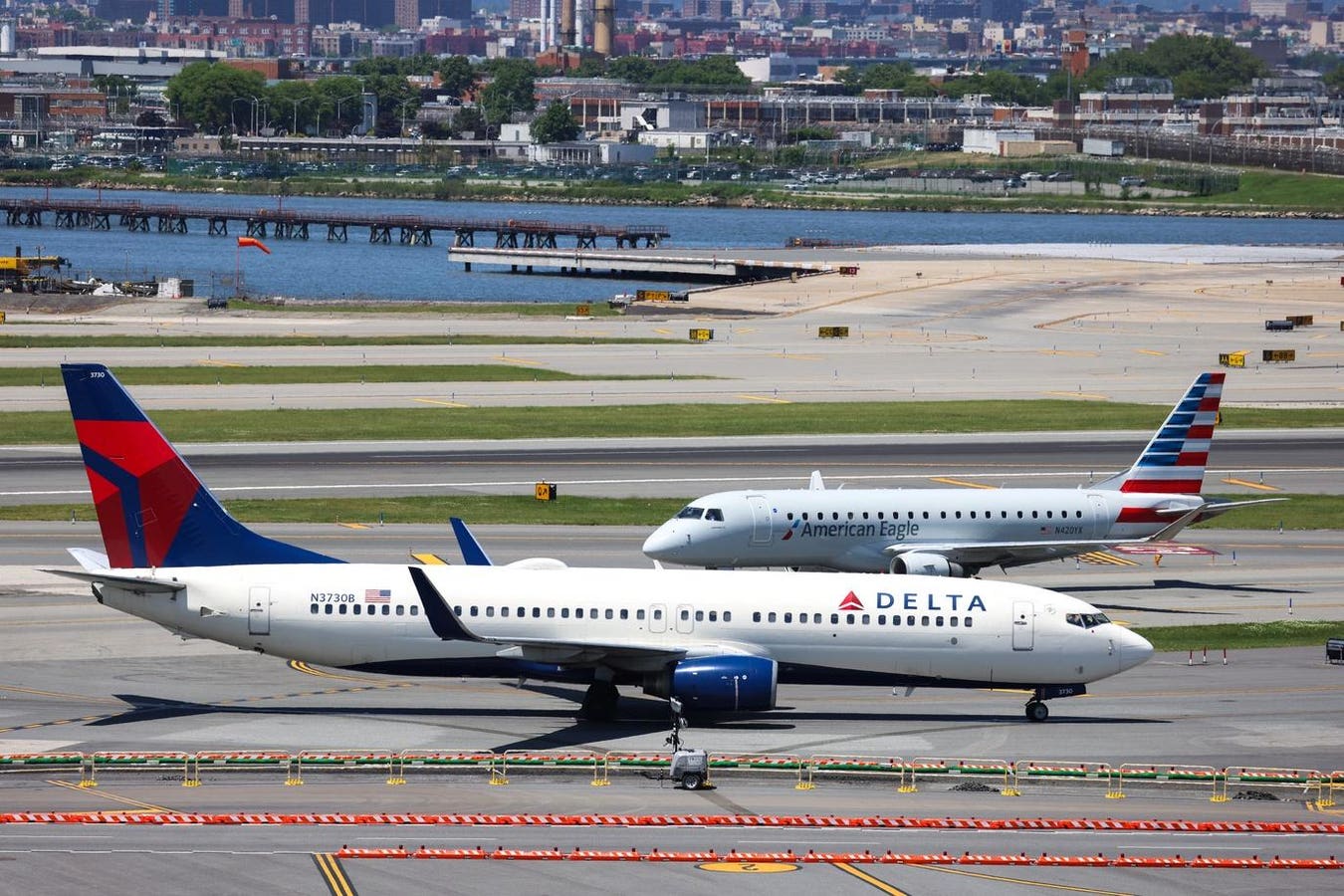A Delta 737 and an American E175 taxi in May at LGA, where Delta has a 42% share while American has … [+]
The Sunbelt airline has a network problem: It needs more presence in the rest of the country, particularly New York City.
American Airlines CEO Robert Isom briefly referenced the shortcoming during the carrier’s third quarter earnings call on Thursday, saying, in response to an analyst’s question, “Coming out of the pandemic, we really focused on restoring our Sunbelt hubs to get them to full capacity. You’ll see us position more capacity in the northern tier hubs.”
American is strong in the Sunbelt, with two of the three largest single carrier hubs in the world at Dallas and Charlotte. However, the carrier is not so strong to the north and on the West Coast. That’s a disadvantage in the competition with Delta and United, its peers. On the earnings call, however, the focus was on the ongoing recovery from a failed effort to circumvent corporate distribution norms.
Unlike competitors’ earnings call presentations, American did not include an executive such as Delta President Glen Hauenstein or United Chief Commercial Officer Andrew Nocella to discuss the network. Isom briefly covered the topic, most notably in responding to questions from JP Morgan analyst Jamie Baker. Baker asked, “I’m curious, what you think your greatest network deficiencies are? And more importantly, does management have the appetite or is it a priority to address those deficiencies?”
Isom responded, “We have a fantastic network. It can take customers anywhere they want to get in the world. We have the best set of partnerships in the biggest business and travel destinations around the world. We’ve been aggressive in the past in terms of making sure that we shore up any deficiencies. Most notably, we have a relationship with Alaska Airlines on the West Coast. We tried to strengthen our position on the East Coast with the NEA.”
The NEA or Northeast Alliance was a partnership with JetBlue that provided American with feed traffic in New York and Boston. In a misguided ruling, a federal judge disallowed the NEA, depriving passengers of a third option in New York.
Isom continued by noting that at LaGuardia and Kennedy airports, “We will be flying, as we move into next year, the largest schedule that we’ve had since the pandemic.” He also listed American’s primary strengths in New York; transcon flying and “the best shuttle to London Heathrow,” in partnership with British Airways. As for the West Coast, he referred to the partnership with Alaska Airlines.
In a note issued following the earnings call, Baker wrote, “We’re disappointed that American isn’t more aggressively solving for presumed losses in Chicago and New York,” which he said was the basis for his question about network deficiencies.
American has announced that it will add JFK-Haneda on June 28, 2025 making it the only carrier to fly between New York and Tokyo. It will add daily service to Bridgetown, Barbados on Nov. 5 and Saturday service to three additional Caribbean destinations on Dec. 7.
Nevertheless, American’s position in the New York area is weak. The Port Authority’s airport stats show that in the year ending August 31, Delta carried 30% of JFK passengers, while JetBlue had 24% and American had 12%. At LaGuardia, Delta had 42% and American 21%, with Southwest third at 10%. At Newark, United had 65% and Spirit was second at 6%.
“In 2017 Robert Isom called New York ‘a boutique operation,” said Dennis Tajer, spokesman for the Allied Pilots Association, which represents American pilots. “Now they struggle to make sure it doesn’t become a bodega operation.” New York, Tajer said, “is the largest niche out there and they’re not addressing it.”
In 2011, before a 2013 merger with American, US Airways made a deal with Delta. It traded 132 slot pairs at LaGuardia for 42 slot pairs at Washington National. That deal was a major contributor to today’s alignment at LGA.
During the call, the emphasis on corporate distribution strategy “provided a welcome distraction from the problems at American, which lie in the network and the quality of the product,” Tajer said.
Weakness in New York has likely diminished the value of American’s frequent flyer partnership with Citibank and Barclays, given that New York is a wealth center.
Steve Johnson, vice chairman and chief strategy officer, answered an analyst’s question about where American was hurt most by its discarded strategy to circumvent distribution norms. “Was the share loss really even across your network, in places like DFW and Charlotte?” asked Evercore analyst Duane Pfennigwerth.
No, said Johnson. The most harm came “in the big cities that are the most competed: New York, L.A., Chicago. We definitely were hurt disproportionately in places where we’re less strong.” Said Tajer, “They painted themselves into a corner in New York. Now they are scrambling to get back.”

